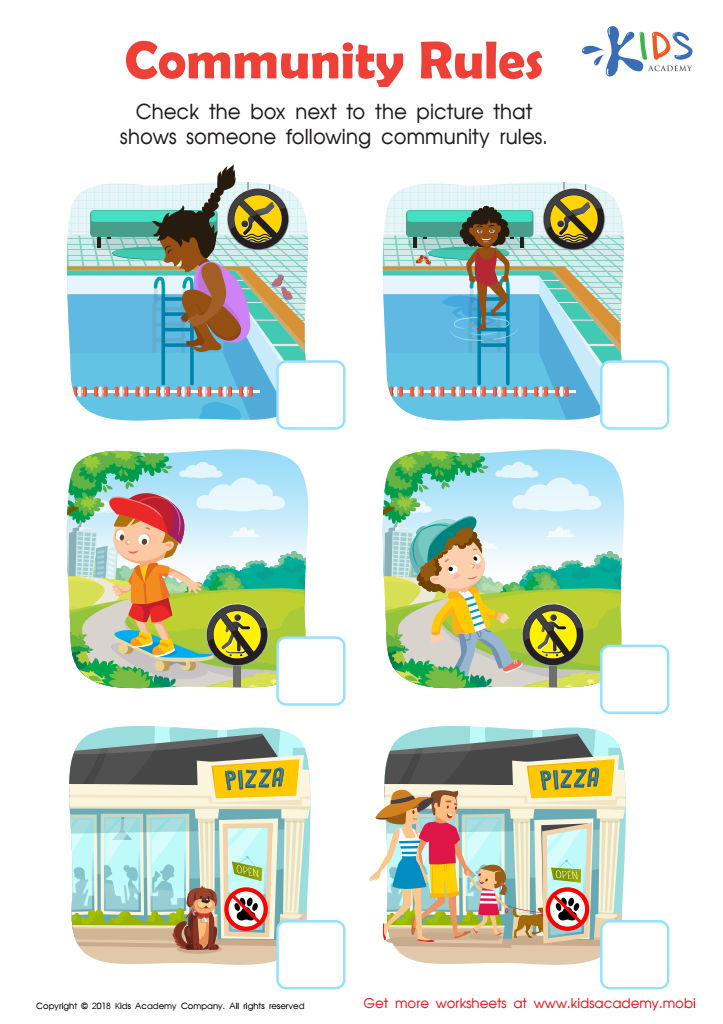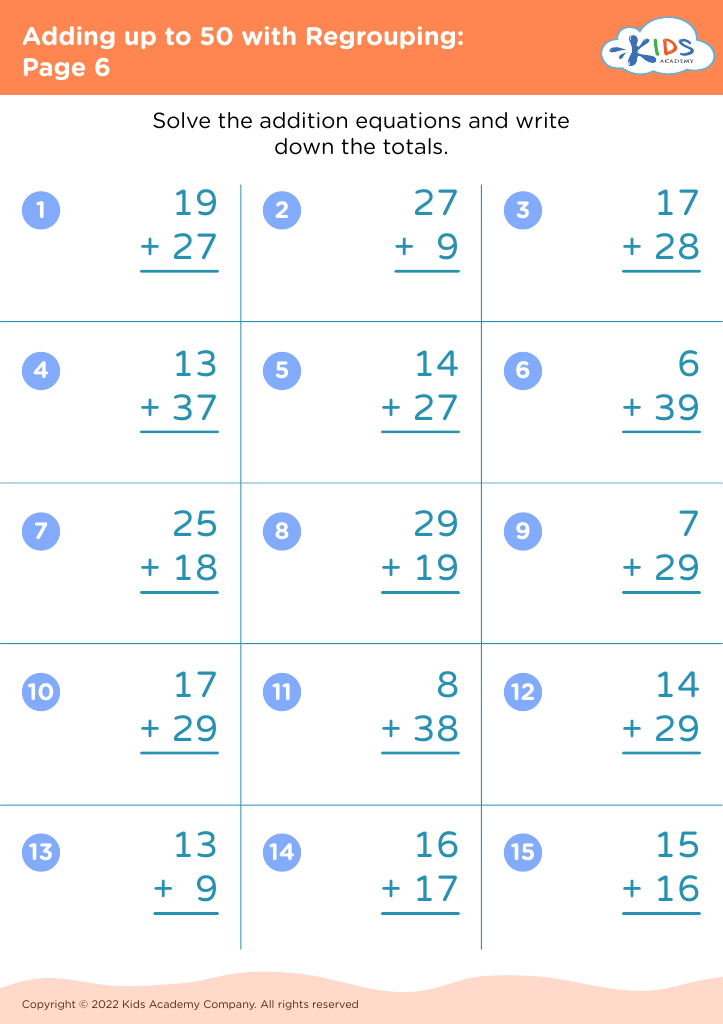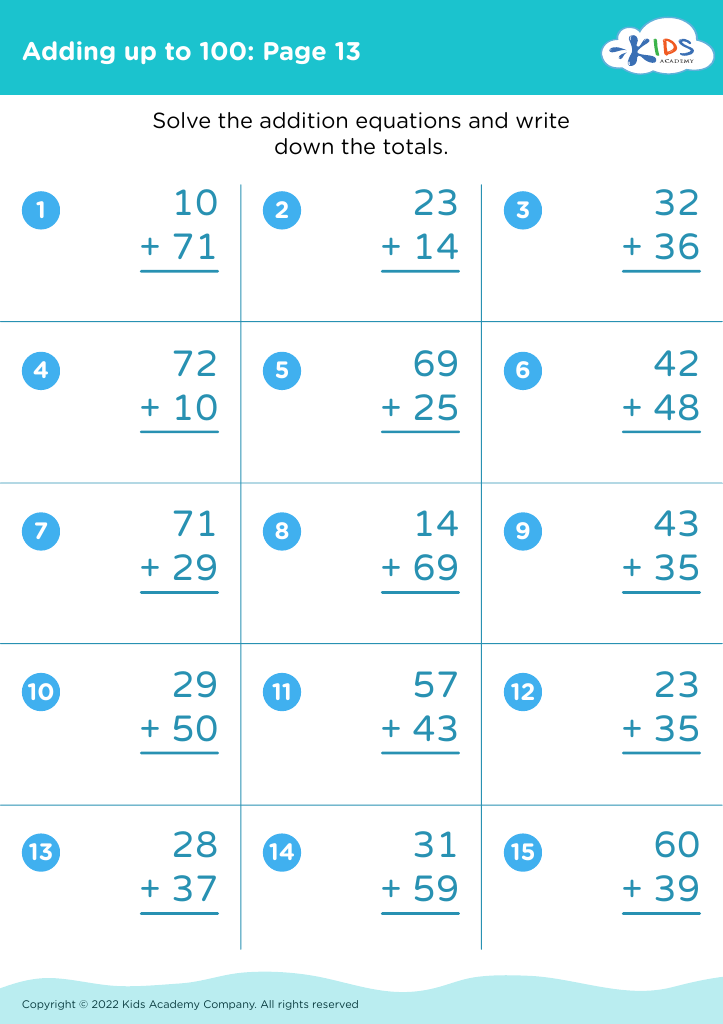Visual interpretation skills Worksheets for Ages 6-8
3 filtered results
-
From - To
Enhance your child's ability to understand and process visual information with our fun and educational Visual Interpretation Skills Worksheets for ages 6-8. Designed to engage young minds, these worksheets help develop critical thinking, attention to detail, and visual differentiation. Perfect for both classroom and at-home learning, our activities include image matching, spotting differences, pattern recognition, and more. Boost your child's confidence and academic success through interactive, well-structured exercises crafted by educational experts. Promote a love of learning and sharpen essential skills with Kids Academy’s visual interpretation resources. Download now and watch your child thrive!


Community Rules Worksheet
Visual interpretation skills are crucial for children aged 6-8 as they lay the foundation for reading comprehension, problem-solving, and cognitive development. At this developmental stage, kids transition from "learning to read" to "reading to learn." They encounter an increasing amount of visual information, like charts, pictures, and diagrams, which aid in holistic understanding.
First, strong visual interpretation skills enhance reading comprehension. Young readers often encounter picture books that rely heavily on imagery to convey meaning. Interpreting these visuals accurately helps them better understand the story, enriching their reading experience and vocabulary.
Second, these skills improve problem-solving and critical thinking. Educational content across subjects like math and science often includes visual elements such as graphs, shapes, and symbols. Children who can decode these elements are better equipped to grasp complex concepts, identify patterns, and execute problem-solving strategies.
Lastly, visual skills support social and emotional learning. Through interpreting facial expressions, body language, and social cues in media and their environment, children develop empathy and effective communication skills. Therefore, fostering visual interpretation skills ensures children not only excel academically but also grow into perceptive, well-rounded individuals.
Investing in these skills at a critical juncture supports holistic educational development, empowering children with the tools they need to thrive in an information-rich world.

 Assign to the classroom
Assign to the classroom




.jpg)







